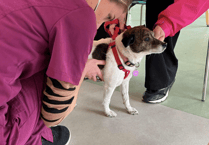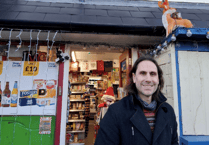OFFICE furniture has been donated to the new Forest community hospital which is currently under construction in Cinderford.
The furniture has come from the Gambling Commission’s satellite office in London – which recently closed – and has been donated to the Gloucestershire Health and Care NHS Foundation Trust.
The Commision regulates most types of gambling in the UK, including the National Lottery, and licenses individuals and businesses that offer gambling.
Construction of the new Forest Community Hospital, which will replace the Dilke and Lydney hospitals, began in July on the site of the former playing field and skate park in Steam Mills Road.
Works are expected to be completed by early 2024.
Donated through the Commission’s partnership with Collecteco, the furniture donation, which includes a range of desks, has meant £19,000 has been saved by the recipients, ensuring that 5,595kg of waste avoided going to landfill, which in turn has prevented the release of around 5,000kg of carbon dioxide.
Alistair Quigley, chief technology officer of the Gambling Commission said: “With around 22 million pieces of furniture discarded in the UK each year, and only 15% of it being reused, it is vital that organisations are able to redistribute their equipment to those who need it to help them and their staff operate effectively.
“The hospital will be vital for the local community and the donation, through our valued partnership with Collecteco, allows staff at the hospital to prioritise their vital work without needing to invest in new office furniture.”
Space Utilisation Manager from Gloucestershire Health and Care NHS Foundation Trust said: “The furniture we’ve received will be used in a new community hospital being built in the Forest of Dean, supporting a bid for funding on paper for our admin block.
“The desking is of such a high quality and lovely looking, we are really happy with it and very appreciative.”
The hospital is being built on behalf of the trust by construction contractor Speller Metcalfe.
It is being built to the sustainable BREEAM ‘Excellent’ standard, with a range of measures in place to lower environmental impact and improve energy efficiency.
These include protecting and increasing the existing habitat and hedgerow by planting more than 100 new native trees, extending the dormouse habitat and using ecologically-friendly lighting at the hospital entrance to avoid disrupting the existing bat flight path.




Comments
This article has no comments yet. Be the first to leave a comment.